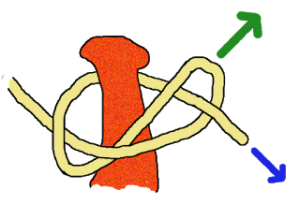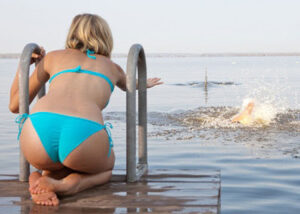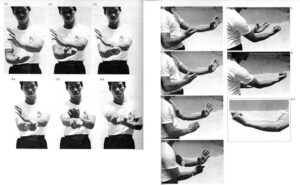I have been reading up on knots again the past few days. Knots are a subject we have touched on a couple of times in this blog. I used a Fisherman’s Knot to create an adjustable lanyard for my kukri and a combination of Overhand knot and Fisherman’s Knot to create my tenouchi. I have been debating whether to add a post or two dedicated to the subject of useful knots since it is a subject some people have trouble with.
While researching I became aware that the following application for a Figure Eight knot was rather conspicuous by its absence on the internet. I came across this in the Time-Life Book on Cowboys. I no longer have the book but fortunately I had sketched it and scanned the sketch onto my computer when I cleared out a load of old papers a few years back. Playing with my favourite graphics program produced the image below.

The application is to quickly tie off a lasso to a saddle horn, but the knot itself and how it is tied can be used in other contexts.
The left end of the rope has been thrown around a steer or mustang and is about to come under a considerable load. The cowboy holds part of the lariat in his right hand near the green arrow. The rest of the lariat is on his left.
The cowboy pulls the rope against the left side of the pommel using his right hand and then brings the free end of the rope over the top of the taunt rope, around the right side of the pommel and through the loop held by the right hand.
This is quite a useful technique. I have noticed that with some cordage the knot will tend to slip if the free end is not further secured. The cowboy doubtless made a loop in the free end and slipped it over the horn to create a half hitch. Once the figure eight has taken the initial strain this is easy to do. Alternately a couple of half-hitches can be applied to the standing part.

My original sketch, also showing another method of dally. The advantage of the figure eight is that it can be applied to a mast or tree where you could not throw coils over the top. It is easier to apply under strain than, say, a round turn and two half hitches.






